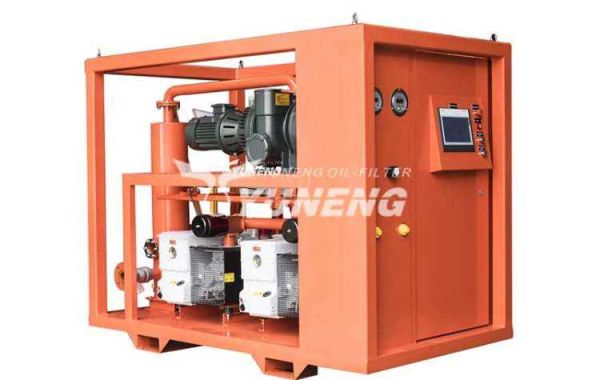oil, and to restore and improve the physical and electrical properties of transformer oil. Among them, moisture has great harm to the performance of insulating oil and the life of oil-using equipment, which are described as follows:
(1) Reduce the breakdown voltage of the oil. The water content in the insulating oil is the main reason for the reduction of the breakdown voltage.
(2) Increase the dielectric loss factor, because the existence of water in the oil is different, and the influence on the dielectric loss factor is also different. Suspended emulsified water increases the dielectric loss of oil most obviously. Corrosion products of moisture, such as naphthenic acid soaps, can easily deteriorate the dielectric loss and sharply increase the dielectric loss, which is an indirect consequence of the influence of moisture on the dielectric loss.
(3) Make the insulating fiber easy to age and increase its dielectric loss.
(4) Moisture promotes the corrosive ability of organic acids and accelerates the corrosion of metal parts. And metal corrosion products, such as metal soaps, will promote the rapid aging of oil, that is, play a catalytic role in the aging of oil.
To sum up, the more water content in the oil, the faster the oil quality, the aging of equipment insulation and the faster the corrosion of metal parts, which will affect the safe operation of the equipment and shorten the service life of the equipment.
1.2 The main means of safety monitoring of transformers
Through the chromatographic analysis of the gas in the oil, the change of the gas content in the oil is detected, so as to analyze the potential faults and hidden dangers of the transformer, so as to maintain or eliminate the fault in time and prevent it from happening. Changes in the content of total hydrocarbons, acetylene, and hydrogen dissolved in oil are the main parameters for diagnosing transformer faults. Therefore, the use of gas chromatography to regularly analyze the gas dissolved in the oil can detect the latent fault inside the equipment as soon as possible, and keep abreast of the development of the fault and take necessary measures.
It is difficult to make a correct judgment on the severity of equipment failures only based on the absolute value of the analysis results of dissolved gases in oil. The development trend of the failure, that is, the gas production rate at the failure point, must be examined. The gas production rate is directly related to the amount of energy consumed by the fault, the fault location, and the temperature of the fault point. Therefore, in order to correctly measure the gas production rate and carry out gas analysis, and improve the safety performance of the transformer, it is required that the newly installed or repaired transformer, or the characteristic gas content in the insulating oil after oil filtering of the faulty transformer should not exceed the normal specified value, and the acetylene content should be zero, while limiting the total gas content to a certain range.
Reasons for the presence of acetylene in the oil after part of the vacuum oil filter
The reasons for the production of acetylene in the oil: one is the acetylene contained in the transformer oil itself; the other is that the oil is partially overheated and decomposed by the electric heating or pump pressure system during the treatment of the vacuum oil filter - from high molecular weight to low molecular weight, resulting in Gases such as hydrogen, acetylene and CH4 (methane). The oil filter used now generally produces acetylene gas during the oil treatment process. If it is not removed at the end of the oil treatment, there will always be a small amount of hydrogen and acetylene gas in the treated oil.







